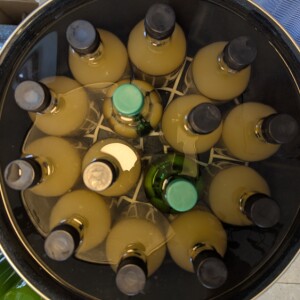Balanced
Beloved of water engineers, garage mechanics and petty criminals, the principle of siphoning was first documented 2,000 years ago by Hero of Alexandria, but there is evidence of use at least 1,500 years before that. I still remember the first time I saw one (for petrol, but nothing dodgy) - young enough to still be shocked that the physical world could do something so unexpected
I thought the physics would be quite simple. Brittanica says it's all about gravity, not atmospheric pressure as some people think. 'Modern Physics' says "Atmospheric pressure plays a pivotal role in sustaining the flow of liquid" and "The maximum height of the siphon is limited by atmospheric pressure", but I found a scientific paper that claimed to have surpassed the maximum (10.33m), using surfactants, enhanced fluid cohesion and transient metastable states. Who am I to argue?
"To fully comprehend siphoning, a basic understanding of fluid dynamics equations is beneficial. The continuity equation... The Bernoulli equation... Mathematically,... v=√2gh" and so on. My early conclusion that it is kind of magic still stands
When you siphon wine or beer or wine off the lees in the fermentation vessel into bottles or barrels, it is called 'racking' - because you are taking the liquid away from something transient into something more permanent that will be stored on a rack. Rightly or wrongly, we use the same term for apple juice. Sitting overnight allows some of the larger particles of apple flesh to sediment out - those that made it through MrsM's multi-layered muslin filter. We rack it off into bottles without disturbing the sediment. Then we pasturise in the bottles (25 mins @ 75°C) for long-term storage - at least that is science I understand


Comments
Sign in or get an account to comment.


